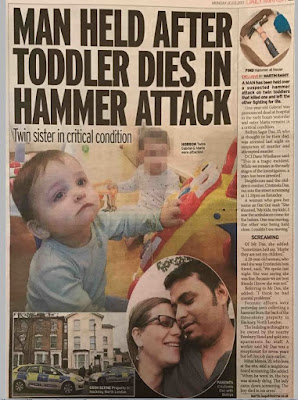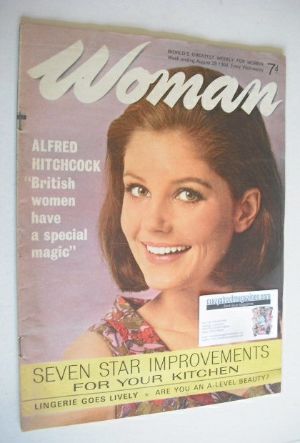Component 1 A
In what ways do music videos encode viewpoints and ideologies? Make reference to Formation by Beyoncé and Riptide by Jack Vance. [30]
Media Language - Barthes (enigma codes) / Levis Struass (binary opposites)
Representation - Hall (re-reprentation of a group in society) / Gauntlet (pick n mix identity) / Van Zoonen (womens bodies are used to sell a product to a male heterosexual audience)
Producers have constructed ideologies and viewpoints with in their music videos to explore and identify how to present individuals(celebrities) and social groups in different ways.
In the music video Formation by Beyonce, it encodes a viewpoint where the artist takes an almost goddess-like role due to her success and power, as well as her attention and awareness to world issues. When Beyonce is shot in a scene on top of a sinking police car, she is literally put above law, and seen as something higher to her fans and audiences. This creates an enigma code(Barthes), as it raises questions and makes the video more of a mystery as audience want to know why these scenarios have been applied to this video. As a result, media publicity is drawn to the crisis in New Orleans as this celebrity has the power to do so. Additionally, the ideology of Beyonce's almost 'sacred' portrayal is enhanced through the mise-en-scene of the video, for example, slow motion and birds-eye camera angle techniques, along with her angelic body language and facial expression.
On the other hand, in Vance Joy's video, Riptide, it forms an unusual link by presenting viewpoints on the oppression of women through themes of horror. This is done through the use of displaying paradigms typically from the horror genre, eg. dark lighting, horrified facial expression, graveyard settings, a gun and dragging bodies across the floor. This is met by features of the video that comply to Van Zoonens theory that womens bodies are used to sell a product aimed at a male heterosexual audience. For example, the video includes a shot where an unidentified woman undresses facing away from the camera. This is enhanced by a lower floor camera angle, as if audiences are watching and the subject doesn't know. I think producers have done this to create the ideology that the objectification of women is a subject that is almost horrific to think about and this is why they have made this representation.
Furthermore, Beyonce's music video, formation reveals many viewpoints and ideologies that explore conflict which consequently creates binary oppositions(levi-strauss). An example of this could include the contrast between white and black culture and how it is interestingly represented in the Formation music video. This is because the white culture is performed through the costume and setting of the video eg. suit and tie, big ancient houses, maids, children in white dresses and bonnets, however the cast of the video are all of darker skin colour taking on the typically 'white' social qualities. Another contrast could be the re-representation of 1950's New Orleans fashion conflicting with the modern video that displays issues that New Orleans faces today. This applies to Halls theory as he believes representations exist through repetition and remix of media trends.
To conclude, music videos are a method of creating multiple representations of different individuals/groups so that viewpoints and opinions and messages can be put across to the audience.
Component 1 B
Explore the ways in which production, distribution and circulation have shaped the newspapers you have studied. Make reference to The Daily Mirror and The Times. [15]
Curran and Seaton - Power and media (media concentration limits creativity and variety)
Sonia Livingstone - Regulation (traditional approaches to media regulation at risk)
David Hesmondhalgh - Cultural Industries (companies try to minimise risks and maximise audiences through vertical and horizontal integration)
The Daily Mirror's production focuses on enhancing emotion and tragedy through their media platform to generate profit. This is done through using horrific words in their headlines such as 'hammer' and 'attack', creating a binary opposition with words associating with innocence like 'toddler'. This applies to Livingstones theory of regulation where more traditional approaches to media media regulation are at risk due to these brands' motives. On the other hand, where The Times reports the same story, their production focuses on informative and traditional techniques rather than a scandalous description. Less imagery and coverage yet still publishing the same content and information.
Both The Daily Mirror and The Times have ben shaped by distribution due to continuous mass developments in technology. Media convergence between newspapers and technology has allowed news to be published in multiple different ways other than print: apps, online websites, email, social media etc. This has allowed news companies to expand massively.
Both The Daily Mirror and The Times have ben shaped by distribution due to continuous mass developments in technology. Media convergence between newspapers and technology has allowed news to be published in multiple different ways other than print: apps, online websites, email, social media etc. This has allowed news companies to expand massively.
The circulation of both the Daily Mirror and The Times have shaped the newspapers by being part of a Conglomeration. As these newspapers may be owned by the same larger vast corporation, according to Curran and Seaton, this media concentration is what limits creativity and variety. Evidence of this could be seen as the fact that both newspapers chose to publicise on the same story, but taking two different viewpoints. This allows the conglomerate to decide what types of opinions audiences will have on events and issues.
Component 2
To what extent has sociohistorical context influenced representations in the magazines you have studied? Make reference to both Adbusters and Woman. [30]
Patriarchal hegemony - women being dominated (power being weilded from another group)
Paradigmatic features - typical features to a genre
Postmodenism - 'style over substance'
Ideology -
Polysemy - not everything has one single meaning
I think that sociohistorical context has greatly influenced representations in the magazines I have studied.
Woman magazine analyses and represents a time period where women were hugely oppressed and objectified; typically they took the role of the housewife, where they would stay home to cook, clean, look after the children and wait for their husbands to come home from work. The advert with in the 60's magazine for Breeze soap is a prime example of portraying women as objects as it displays a woman fully undressed selling a product. Using theories explored by Lisbet Van Zoonen, the women's body is being used in a media product as a spectacle for heterosexual male audiences, which reinforces patriarchal hegemony. This means the stereotype that woman are important and significant only for their bodies and for the sole purpose to appeal to men is being reinforced by this advertisement. The subjects seductive body language and facial expression, combined with her face full of make-up gives us the impression that all women are and want to use a passive attitudes. Consequently, these aspects of sociohistorical context have influenced the representations of women and their bodies in the media today as this is where initial media trends would have formed.
























